New products at Crocus
by Sarah - June 19th, 2009.Filed under: Crocus, New Products.
New lines at Crocus
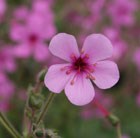
cranesbill £6.49
Position: full sun or partial shadeSoil: fertile, well-drained soilRate of growth: averageFlowering period: June to AugustHardiness: half hardyAn architectural cranesbill with a stout, succulent stem and huge glossy leaves arising from a rosette to 100cm. This is the true plant from Madeira, raised from seed and culminating in a dazzling display of hundreds of large reddish-mauve flowers with darker veining. Monocarpic (dies after flowering) and not hardy but will happily seed around in frost-free conditions. Garden care: Protect from frost during winter with a framework of twigs or canes covered in fleece and stuffed with straw or bracken. If container grown, place in a sheltered, cool position and restrict watering during the coldest months. Collect seed after flowering to maintain stock.
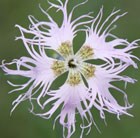
pink £5.99
Position: full sunSoil: well-drained, neutral to alkaline soilRate of growth: averageFlowering period: May and JuneFlower colour: purplish-pinkOther features: soft, mid-green leavesHardiness: fully hardyThe mid green, linear leaves form a low mat of foliage from which slender stems grow first outwards and then upwards, bearing one or two scented flowers. The pink or purple petals have deeply dissected edges which give them a spidery quality. It is one of the taller Dianthus, which will thrive in dry soils in full sun.Garden care: Deadheading as soon as the flowers have faded will help encourage more to come.
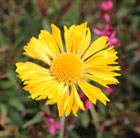
blanket flower £5.99
Position: full sunSoil: fertile, well-drained soilRate of growth: averageFlowering period: June to SeptemberFlower colour: yellowOther features: excellent and long-lasting cut flowersHardiness: fully hardy Big, golden-yellow, daisy-like flowers up to 10cm across, appear from June to September over greyish-green leaves. This gorgeous blanket flower is excellent for the middle of a sunny, well-drained, herbaceous or mixed border. Perfect for a planting scheme based on hot colours, the brassy blooms make excellent and long-lasting cut flowers.Garden care: Stake with brushwood or bamboo canes before the flowers appear. Remove the spent flower-heads regularly to prolong flowering. Cut the stems down to ground-level in autumn, lifting and dividing large clumps every third year.
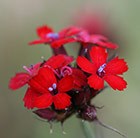
feld pink £5.99
Position: full sunSoil: rich but well-drained, alkaline to neutral soilRate of growth: averageFlowering period: June to AugustFlower colour: reddish-pink to nearly whiteHardiness: fully hardy, but protect from excessive winter wet A lovely little alpine, which is a native of the Balkans. The upright flower stems bear clusters of pinky-red to almost white flowers in late spring and summer. These bob happily above the long, bluish-green, evergreen foliage. It is easy to grow and the bees and butterflies will love you for it.Garden care: Dianthus should be trimmed back lightly after flowering to promote new basal growth. Prune more closely in spring, as new shoots emerge to maintain a tidy shape.
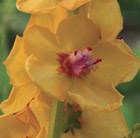
mullein £5.99
Position: full sunSoil: poor, well-drained, alkaline soilRate of growth: averageFlowering period: July to SeptemberHardiness: fully hardyBred and selected by the National Collection holders of Verbascum, Vic Johnstone and Claire Wilson. V. 'Clementine was first launched at the Hampton Court Flower Show in 2003. An elegant and architectural perennial, which is said to be more reliably perennial than many other Varbascums. The brightly coloured flowers are held on well branching stems, and it makes a great addition to a mixed or herbaceous border. It will perform best in well-drained neutral or alkaline soil in sun or dappled shade.Garden care: Cut old flowering stems to ground level throughout the season to promote further flushes of flowers. Cut off dead or dying foliage from basal rosettes to allow good air circulation. Regularly pick off mullein moth caterpillars from the foliage to prevent very holey foliage!

perennial phlox £5.49
Position: partial shadeSoil: humus-rich, fertile, moist, well-drained soilRate of growth: averageFlowering period: May to JuneFlower colour: lilac-blueOther features: hairy, bright green leavesHardiness: fully hardyFragrant, lilac-blue flowers in May and June and hairy, bright green leaves. An attractive spreading, semi-evergreen plant that is ideal for planting along the edge of the border or by a well-used path where the perfumed blooms can be appreciated. Add lots of leaf-mould or composted pine needles to the soil when planting, since it prefers a humus-rich soil.Garden care: Add lots of leaf-mould or composted pine needles to the soil when planting. Lift and divide large clumps in autumn or spring
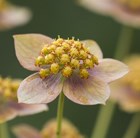
bupleurum £4.99
Position: full sunSoil: reasonably fertile, well-drainedRate of growth: fastFlowering period: June to SeptemberOther Features: the flowers make long lasting cut flowersHardiness: hardy, short lived perennial or annualRelated to the ever-popular Astrantias, this is an attractive an unusual plant, which will thrive in any well drained soil as long as it gets lots of sun. The small yellow flowers are often tinged red and are surrounded by a ruff of greenish yellow bracts, which are often stained with rusty red. These appear in cluster on top of upright stems in summer and attract a host of insects. They are generally short-lived, but will self-seed freely in the right spot.Garden care: Avoid cutting back the flower stems if you want them to set seed. Alternatively the flowers make long lasting additions to bouquets and indoor arrangements.
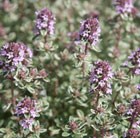
thyme £4.99
Position: full sunSoil: well-drained neutral to alkaline soilRate of growth: average to fast Flowering period: May and June Flower colour: bright purple to whiteOther features: the aromatic leaves are a useful ingredient in bouquet garni, stuffings and sauces; highly attractive to bees and other beneficial pollinating insectsHardiness: fully hardyBright purple to white flowers in late spring and early summer and wonderful, white-margined, aromatic, grey-green leaves. This bushy, creeping thyme is an excellent ground cover plant. Perfect for a sunny rock garden or for edging paths and borders, the aromatic leaves are useful for making bouquet garni, stuffings and sauces.Garden care: After flowering cut back hard using garden shears to retain a neat compact shape. Lift and divide large clumps in early spring
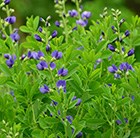
False Indigo £3.99
Position: full sunSoil: deep, moist but well-drained, neutral to acid soilRate of growth: average Flowering period: June Flower colour: dark indigo-blueOther features: the flowers are followed by dark grey seed-pods; mid- to deep green leavesHardiness: fully hardyUpright spikes of dark indigo-blue, pea-like flowers in June, often flecked white or cream. False indigo is perfect for a well-drained border or a dry, sunny bank. Resist the temptation to cut the plant back in autumn since the seed-pods and slender stems look wonderful frosted in the winter garden.Garden care: Lift and divide large colonies in early spring
spider flower £3.99
poppy £3.99






